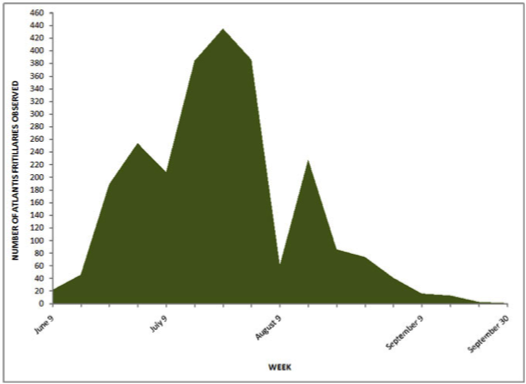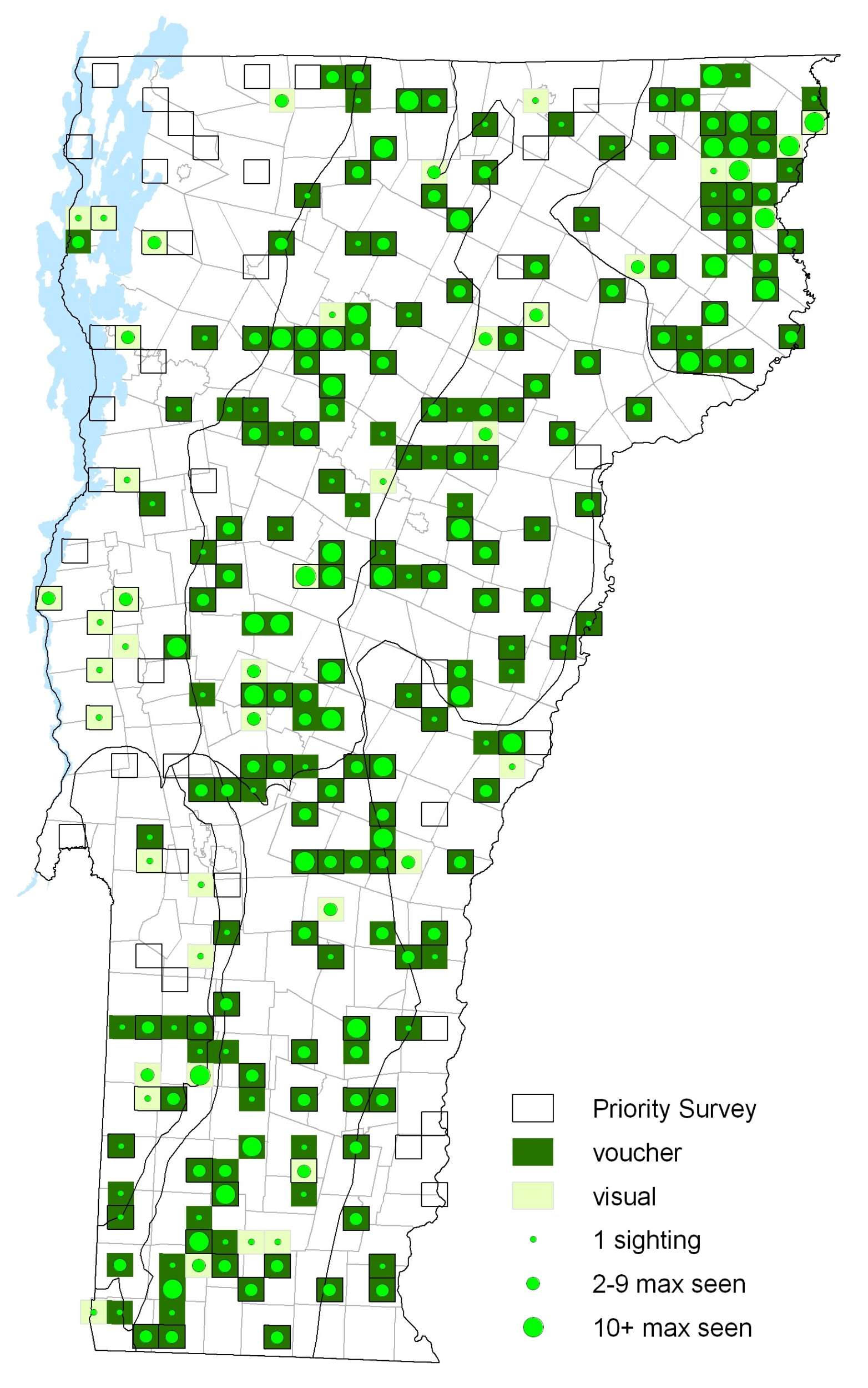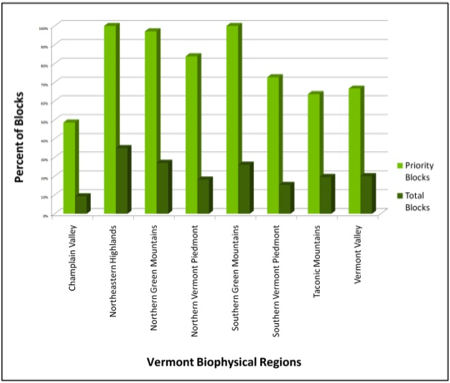|
Resident Conservation Status North American Range |
A butterfly of northern and mountain climates, this is the smallest and darkest of our three greater fritillaries. Males chase females until she lands with wings closed. The male lands near her and flicks his wings rubbing specialized scent scales (androconia) to waft pheromone to her antennae to entice mating. One of the few butterfly phermones readily detected by the human nose. Scudder (1889) described the odor and relayed a story from the hotel on Mount Mansfield, Vermont, “The male has a very perceptible odor which I found it difficult to determine; it seemed to me at first to have somewhat the fragrance of the pine woods; but on applying to Miss Soule, she at once said it was the odor of sandal-wood, which exactly describes it. She added that specimens she had brought into her room at the mountain hotel made it seem close, and a friend who called inquired on entering: ‘Why! do you bring your sandal-wood box up here?’.”
Identification
Generally smaller than Great Spangled and Aphrodite fritillaries. Upperside orange-brown, darker at base, with black outer; male has black scales on veins. Underside of hindwing with basal disk chocolate brown or purplish, hindwing spots always silvered. On live specimens, gray-blue eyes separate this from other greater fritillaries in Vermont.
Flight
One brood and flies from early June through the end of September. Scudder (1889) reported egg laying in Stowe, Vermont on 22 August. Extreme dates: 9 June 2004 in Townsend (S. Harris) and 30 September 2003 in Fayston (L. Ionson).
Distribution and Habitat
Scudder (1889) relayed reports that adults were abundant in Stowe and Lake Memphramegog in 1886, but then indicates that another observer called them “not common” on Mt. Mansfield. Found to be abundant across most of Vermont during VBS, except for the lower elevations in the Champlain Valley. Favored habitats include bogs, meadows, roadsides, ski slopes, and other open habitats, especially at higher elevations. Larval host plants are violets (Viola). Over 20 nectar plants reported during VBS, with milkweed (Asclepias) and Joe Pyed Weed most frequent.







